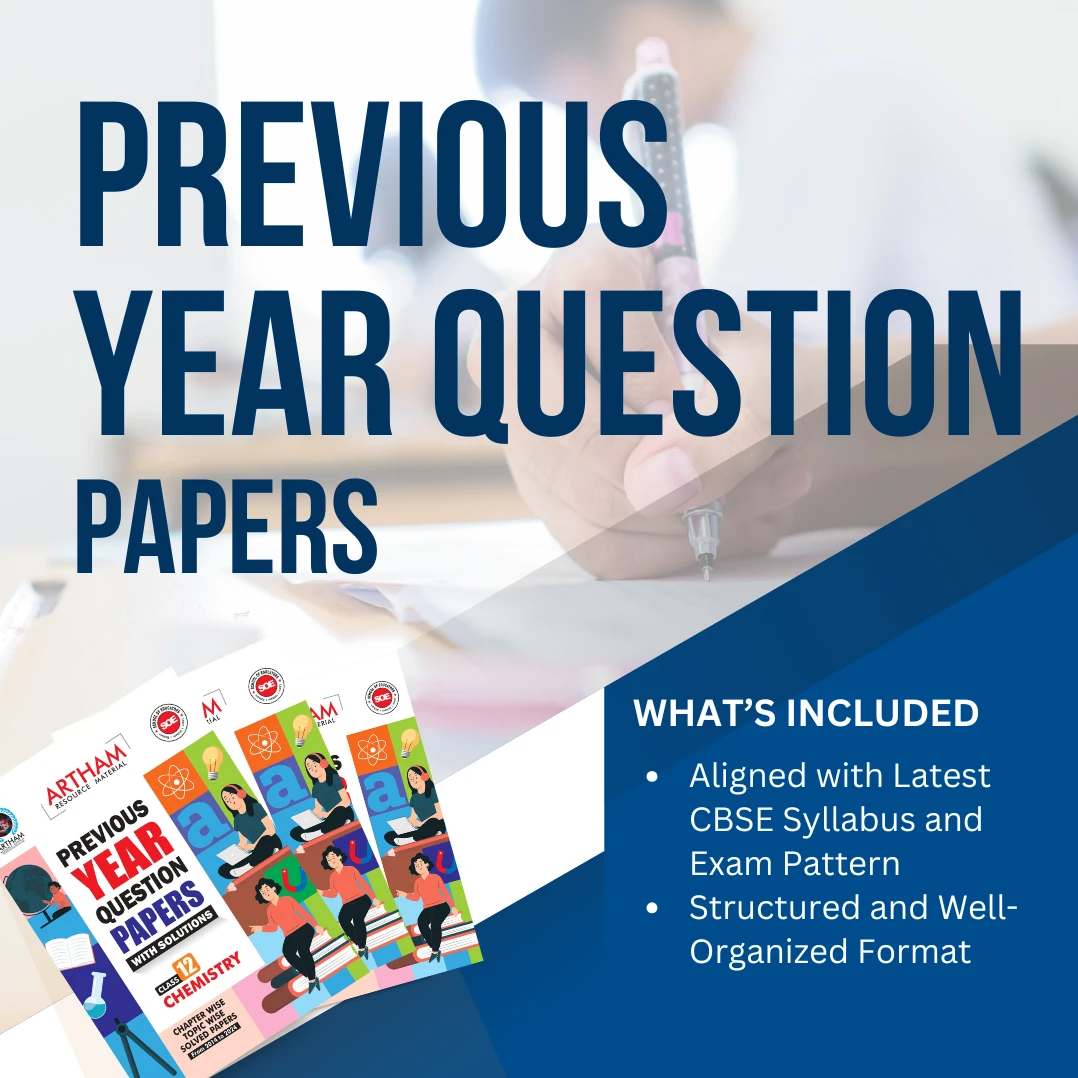Shop Left Sidebar
- CBSE
- Chapter Wise Topic Wise Notes
- Class 10
- Class 9
- Competency-Based Question Bank
- Competitive Exams & Aptitude Tests
- Comprehensive Viva Voice
- Courses
- CUET
- Daily Practice Paper (DPP)
- Diagnostic Assessment
- eBooks
- For New School
- Foundation and Olympiad Study Material
- Gift for Students
- Gift for Teachers
- Half Yearly Sample Question Paper with Solution
- Holiday Homework
- Illustrative Charts
- Journal
- Kindergarten
- Lesson Plan
- Life Skills
- Line by Line Questions
- Mind Maps
- Must Buy
- NCERT Exemplar Solutions
- NCERT Solutions
- Notes
- POWERPOINT PRESENTATIONS
- Pre Launch Stage
- Premium WhatsApp Group
- Previous Year Question Papers
- Previous Year Question Papers with Solutions
- Print version of SOP
- Sample Paper
- Sample Paper with Solutions
- Self Development
- Split -up Syllabus
- Sports and Physical Education
- Standard Operating Manuals
- Study Materials for Students
- Teachers Manual with Lesson Plans
Best seller
-
-100%
₹ 50.00Original price was: ₹ 50.00.₹ 0.00Current price is: ₹ 0.00. -
-100%
₹ 50.00Original price was: ₹ 50.00.₹ 0.00Current price is: ₹ 0.00. -
-100%
₹ 50.00Original price was: ₹ 50.00.₹ 0.00Current price is: ₹ 0.00. -
-100%
₹ 299.00Original price was: ₹ 299.00.₹ 0.00Current price is: ₹ 0.00.
- CBSE
- Chapter Wise Topic Wise Notes
- Class 10
- Class 9
- Competency-Based Question Bank
- Competitive Exams & Aptitude Tests
- Comprehensive Viva Voice
- Courses
- CUET
- Daily Practice Paper (DPP)
- Diagnostic Assessment
- eBooks
- For New School
- Foundation and Olympiad Study Material
- Gift for Students
- Gift for Teachers
- Half Yearly Sample Question Paper with Solution
- Holiday Homework
- Illustrative Charts
- Journal
- Kindergarten
- Lesson Plan
- Life Skills
- Line by Line Questions
- Mind Maps
- Must Buy
- NCERT Exemplar Solutions
- NCERT Solutions
- Notes
- POWERPOINT PRESENTATIONS
- Pre Launch Stage
- Premium WhatsApp Group
- Previous Year Question Papers
- Previous Year Question Papers with Solutions
- Print version of SOP
- Sample Paper
- Sample Paper with Solutions
- Self Development
- Split -up Syllabus
- Sports and Physical Education
- Standard Operating Manuals
- Study Materials for Students
- Teachers Manual with Lesson Plans
Showing 1–16 of 55 results
-
-62%
Lesson Plan Class 8 English Chapter 4 Bepin Choudhury’s Lapse of Memory
₹ 50.00Original price was: ₹ 50.00.₹ 19.00Current price is: ₹ 19.00.In this lesson plan for Class 8 English, students will explore Chapter 4, “Bepin Choudhury’s Lapse of Memory,” from their textbook. This engaging story, written by Satyajit Ray, revolves around the intriguing case of Bepin Choudhury, who is convinced he is suffering from a strange lapse of memory. Students will delve into the plot, character analysis, themes of memory and deception, and the author’s narrative style.
-
-62%
Lesson Plan Class 8 English Chapter 3 Glimpses of the Past
₹ 50.00Original price was: ₹ 50.00.₹ 19.00Current price is: ₹ 19.00.This lesson plan for Class 8 English Chapter 3, “Glimpses of the Past,” is designed to introduce students to significant historical events of India. The chapter is a compilation of stories that provide a vivid depiction of India during the British Raj, focusing on the struggle for independence. The lesson aims to enhance students’ understanding of India’s rich history and the sacrifices made by freedom fighters. Through engaging activities, discussions, and visual aids, students will explore the themes of patriotism, resilience, and the impact of colonialism.
-
-62%
Lesson Plan Class 8 English Chapter 8 A Short Monsoon Diary
₹ 50.00Original price was: ₹ 50.00.₹ 19.00Current price is: ₹ 19.00.The lesson plan for Class 8 English Chapter 8, “A Short Monsoon Diary,” is designed to immerse students in the vivid and poetic narrative of Ruskin Bond’s depiction of the monsoon season. This chapter takes students on a literary journey through the hills of Mussoorie, capturing the essence of monsoon rains and the beauty of nature. The lesson plan includes detailed activities to enhance reading comprehension, vocabulary building, and critical thinking.
-
-62%
Lesson Plan Class 8 English Chapter 7 A Visit to Cambridge
₹ 50.00Original price was: ₹ 50.00.₹ 19.00Current price is: ₹ 19.00.This lesson plan for Class 8 English, Chapter 7 “A Visit to Cambridge,” focuses on exploring the enriching journey of a group of students visiting the historic city of Cambridge. Through vivid storytelling and engaging activities, students will delve into the picturesque landscapes, iconic architecture, and esteemed institutions that define Cambridge. The lesson aims to enhance students’ comprehension skills, vocabulary, and cultural awareness through discussions on British history and academic traditions.
-
-62%
Lesson Plan Class 8 English Chapter 6 This is Jody’s Fawn
₹ 50.00Original price was: ₹ 50.00.₹ 19.00Current price is: ₹ 19.00.This lesson plan for Class 8 English focuses on Chapter 6, “This is Jody’s Fawn,” from the curriculum. The chapter, part of the syllabus, explores themes of empathy, nature, and coming of age through the story of a young boy named Jody who adopts an orphaned fawn. The lesson plan includes activities to engage students in understanding literary elements such as characterization, plot development, and setting.
-
-62%
Lesson Plan Class 8 English Chapter 5 The Summit Within
₹ 50.00Original price was: ₹ 50.00.₹ 19.00Current price is: ₹ 19.00.This lesson plan for Class 8 English focuses on Chapter 5, “The Summit Within,” aiming to delve into themes of determination and resilience through the inspiring story of Sir Edmund Hillary’s conquest of Mount Everest. Students will explore the challenges faced by Hillary and Tenzing Norgay, analyzing their journey as a metaphor for overcoming personal obstacles.
-
-62%
Lesson Plan Class 8 English Chapter 2 The Tsunami
₹ 50.00Original price was: ₹ 50.00.₹ 19.00Current price is: ₹ 19.00.This lesson plan for Class 8 English, Chapter 2, “The Tsunami,” is designed to engage students with a compelling exploration of natural disasters through literary text. The lesson aims to immerse students in the harrowing experiences of characters impacted by a tsunami, fostering empathy and understanding. Key activities include close reading of the chapter to analyze narrative techniques and themes such as resilience and survival.
-
-62%
Lesson Plan Class 8 English Chapter 1 The Best Christmas Present in the World
₹ 50.00Original price was: ₹ 50.00.₹ 19.00Current price is: ₹ 19.00.This lesson plan for Class 8 English, focusing on Chapter 1 “The Best Christmas Present in the World,” immerses students in a heartwarming narrative that explores themes of compassion, history, and the human spirit. The lesson begins with an introduction to the author and historical context, followed by a deep dive into comprehension and analysis of the text’s characters, setting, and plot. Activities include interactive reading sessions, group discussions on moral lessons, and creative exercises such as writing letters from characters’ perspectives.
-
-62%
Lesson Plan Class 8 Social Science (History) Chapter 8 The Making of the National Movement: 1870s-–1947
₹ 50.00Original price was: ₹ 50.00.₹ 19.00Current price is: ₹ 19.00.This lesson plan for Class 8 Social Science focuses on Chapter 8, “The Making of the National Movement: 1870s-1947,” which explores the significant events and personalities that shaped India’s struggle for independence. It covers topics such as the formation of the Indian National Congress, the partition of Bengal, the rise of leaders like Mahatma Gandhi, and key movements including Non-Cooperation and Civil Disobedience.
-
-62%
Lesson Plan Class 8 Social Science (History) Chapter 7 Women, Caste and Reform
₹ 50.00Original price was: ₹ 50.00.₹ 19.00Current price is: ₹ 19.00.This lesson plan focuses on Chapter 7 of Class 8 Social Science, covering the theme of “Women, Caste and Reform” in Indian history. The objective is to explore the social reforms initiated during the 19th century in India, highlighting the roles of prominent reformers like Raja Ram Mohan Roy and Jyotirao Phule. Students will delve into the challenges faced by women and marginalized caste groups, examining their struggles and contributions to societal change.
-
-62%
Lesson Plan Class 8 Social Science (History) Chapter 6 Civilising the “Native”, Educating the Nation
₹ 50.00Original price was: ₹ 50.00.₹ 19.00Current price is: ₹ 19.00.This lesson plan focuses on Chapter 6 of Class 8 Social Science (History), titled “Civilising the ‘Native’, Educating the Nation”. It explores how colonial powers used education as a tool to influence and control native populations during the 19th and early 20th centuries. Students will examine the motives behind the establishment of educational systems by European powers in their colonies, the impact of Western education on indigenous cultures and societies, and the responses of native populations to these educational initiatives.
-
-62%
Lesson Plan Class 8 Social Science (History) Chapter 5 When People Revolt 1857 and After
₹ 50.00Original price was: ₹ 50.00.₹ 19.00Current price is: ₹ 19.00.This lesson plan for Class 8 Social Science (History), focusing on Chapter 5 “When People Revolt 1857 and After,” aims to explore the significant events and aftermath of the Indian Rebellion of 1857. Students will delve into the causes, key figures, and consequences of this pivotal uprising against British rule in India. The plan incorporates interactive discussions, visual aids, and role-playing activities to deepen understanding of historical contexts, such as the Sepoy Mutiny, socio-economic factors, and the impact on India’s nationalist movement.
-
-62%
Lesson Plan Class 8 Social Science (History) Chapter 4 Tribals, Dikus and the Vision of a Golden Age
₹ 50.00Original price was: ₹ 50.00.₹ 19.00Current price is: ₹ 19.00.This lesson plan for Class 8 Social Science (History) focuses on Chapter 4: Tribals, Dikus and the Vision of a Golden Age. Students will delve into the historical interactions between tribal communities and outsiders during colonial times, exploring themes of cultural identity, resistance, and adaptation.
-
-62%
Lesson Plan Class 8 Social Science (History) Chapter 3 Ruling the Countryside
₹ 50.00Original price was: ₹ 50.00.₹ 19.00Current price is: ₹ 19.00.Explore the intricacies of colonial rule in rural India through “Ruling the Countryside,” Chapter 3 of Class 8 Social Science (History). This lesson plan delves into how the British administration governed India’s villages, impacting agriculture, land revenue systems, and the lives of peasants. Students will analyze the Permanent Settlement, Ryotwari System, and Mahalwari System, understanding their socio-economic effects and the resistance they provoked.
-
-62%
Lesson Plan Class 8 Social Science (History) Chapter 2 From Trade to Territory The Company Establishes Power
₹ 50.00Original price was: ₹ 50.00.₹ 19.00Current price is: ₹ 19.00.This lesson plan for Class 8 Social Science focuses on Chapter 2: “From Trade to Territory: The Company Establishes Power.” The chapter delves into the historical context of how the East India Company transformed from a trading entity to a political power in India. Students will explore the early interactions of Europeans in India, the establishment of trading posts, and the gradual expansion of British influence through treaties and conquests.
-
-62%
Lesson Plan Class 8 Social Science (History) Chapter 1 Introduction: How, When and Where
₹ 50.00Original price was: ₹ 50.00.₹ 19.00Current price is: ₹ 19.00.Explore the vibrant tapestry of Indian history with this engaging lesson plan for Class 8 Social Science. Focusing on Chapter 1: Introduction – How, When and Where, students delve into the historical methods of dating events, understanding the geographical context of ancient civilizations, and tracing the evolution of early societies.
Teaching is one of the hardest and most important jobs in the world. We provide the support that teachers need to transform their subjects into terms that their students will understand.
- Nageen International
- B-162, 4th Floor, DDA Shed, Okhla Industrial Area Phase 1 New Delhi-110020 (India)
- WhatsApp us at +91-95208-11111
- Email: info@educatorsresource.in
- (Monday to Saturday) WhatsApp 24*7
2025 Educator Resources. All Rights Reserved.




